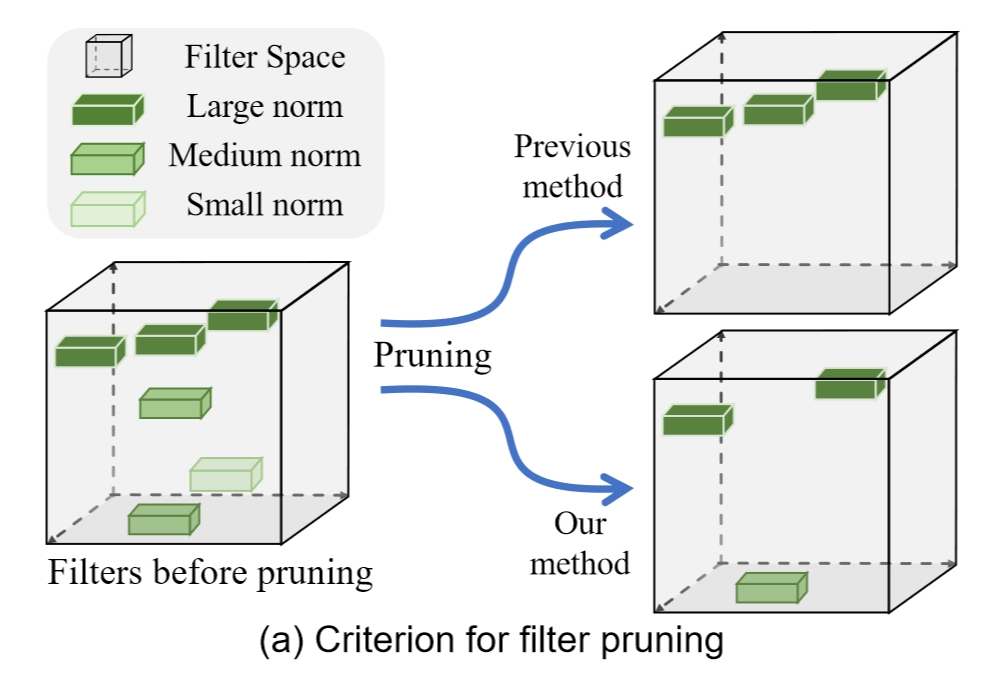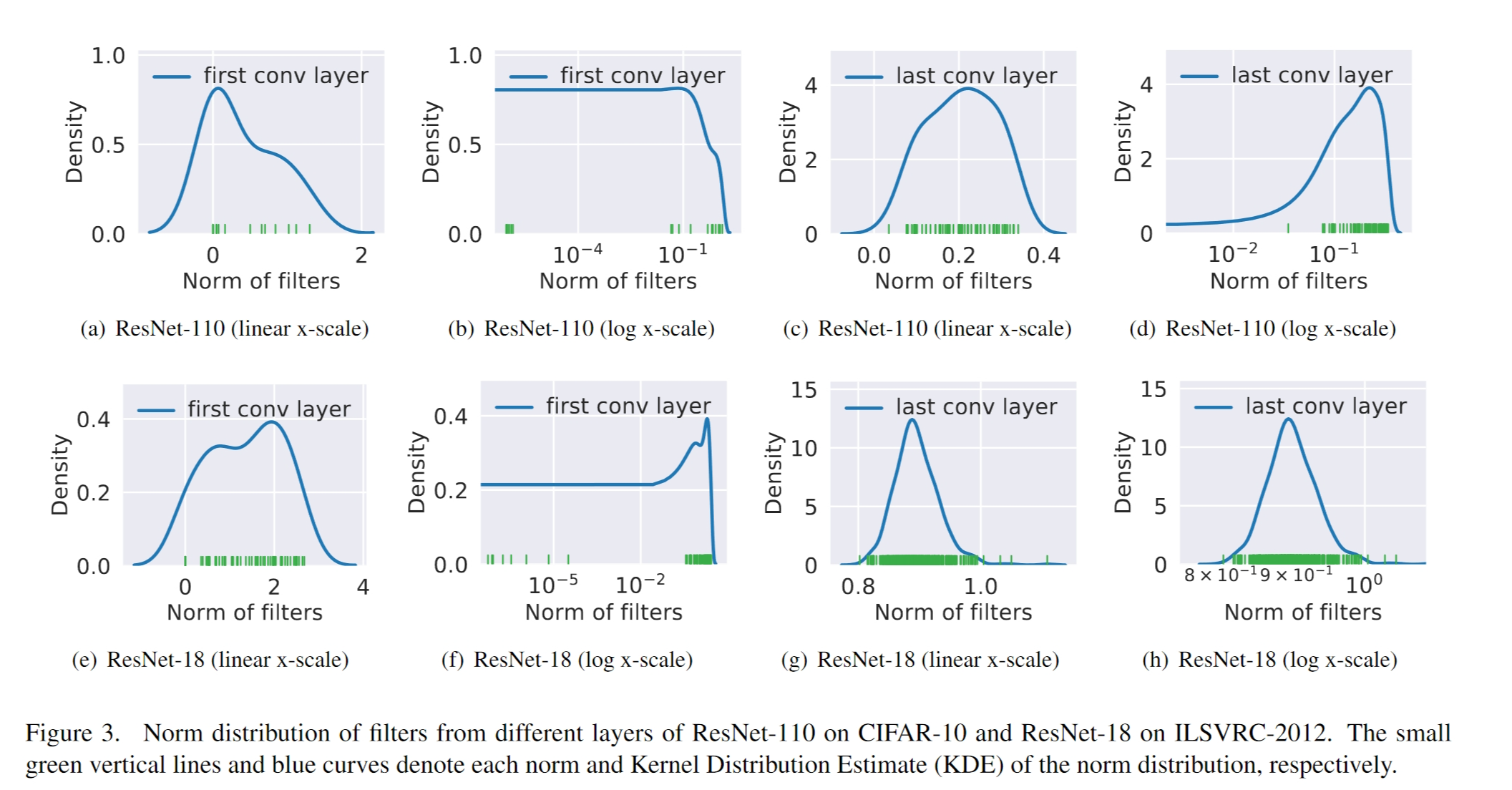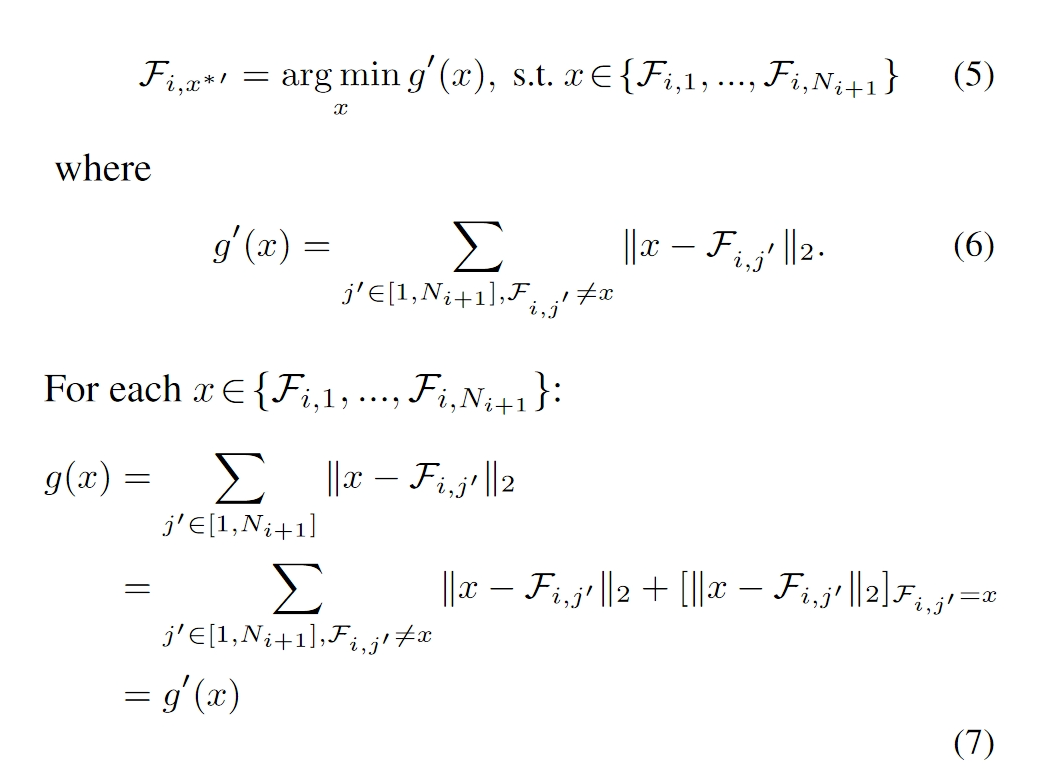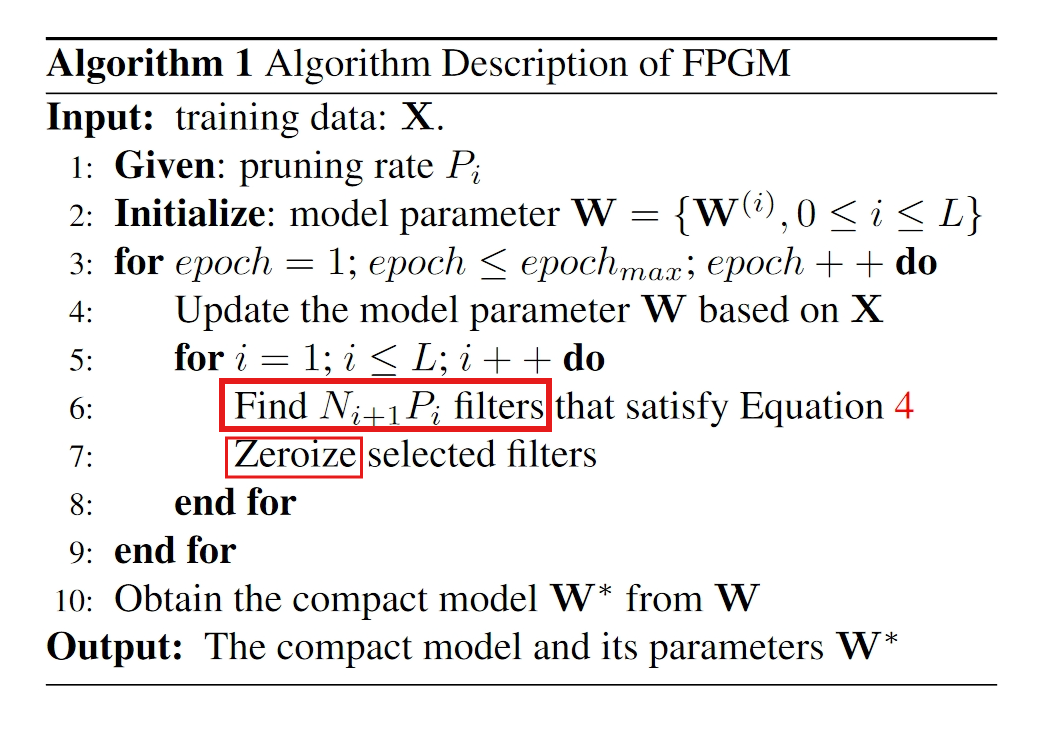Filter Pruning via Geometric Median for Deep Convolutional Neural Networks Acceleration
Abstract
Previous works utilized smaller-norm-less-important criterion to prune filters with smaller norm values in a convolutional neural network.
Its effectiveness depends on two requirements that are not always met: (1) the norm deviation of the filters should be large; (2) the minimum norm of the filters should be small.

To solve this problem, we propose a novel filter pruning method, namely Filter Pruning via Geometric Median (FPGM).
FPGM compresses CNN models by pruning filters with redundancy.

Introduction
FPGM chooses the filters with the most replaceable contribution.

Related Works
Matrix Decomposition
Accelerating very deep convolutional networks for classification and detection
low-precision weights
Trained ternary quantization
Incremental network quantization: Towards lossless CNNs with low-precision weights
On one hand, we introduce three interdependent operations, namely weight partition, group-wise quantization and re-training.
A well-proven measure is employed to divide the weights in each layer of a pre-trained CNN model into two disjoint groups.
The weights in the first group are responsible to form a low-precision base, thus they are quantized by a variable-length encoding method.
The weights in the other group are responsible to compensate for the accuracy loss from the quantization, thus they are the ones to be re-trained.
On the other hand, these three operations are repeated on the latest re-trained group in an iterative manner until all the weights are converted into low-precision ones, acting as an incremental network quantization and accuracy enhancement procedure.
Clustering convolutional kernels to compress deep neural networks
we perform clustering on 3 × 3 kernels and replace the redundant kernels with their centroids.
Therefore, we represent the compressed model with a set of centroids and a corresponding cluster index per each kernel.
Thus, kernels that have the same index share their weights. While maintaining the compressed state, we train our model through the weight-sharing.
Our compression method brings following contributions and benefits.
First, we propose a new method to compress and accelerate the CNN by applying k-means clustering to 2D kernels.
Second, our transform invariant clustering method extends the valid number of kernel centroids with geometric transforms.
knowledge distilling
pruning
weight pruning (often causing unstructured problems)
Data Dependent Filter Pruning
Data Independent Filter Pruning
Method
Preliminaries
In this setting, we want to find the filter

Filter Pruning via Geometric Median
Thus, the algorithm is as follows.
